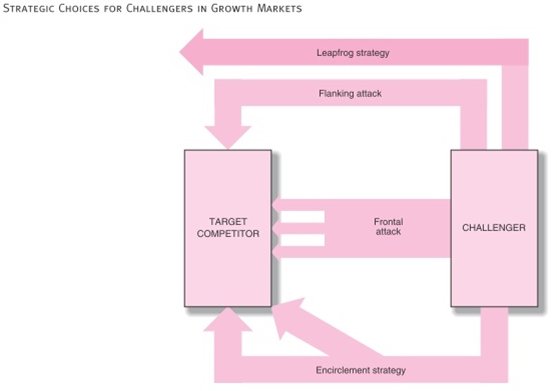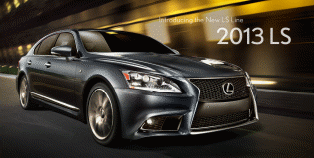- Introduction
- Overview and background information of the brand
- Definition of flanker brands
- Differentiation of types of flanker brands
- Different uses of flanker brands
- How the chosen brand has employed flanker brands as a business strategy
- The advantages and disadvantages of employing flanker brands as a strategy
- The success or failure of the implementation of flanker brands
- Bibliography
Introduction
In a competitive market, organizations often use brand names to create an image and attract more customers. This makes a brand name a key asset to a company. Other than the main brand, companies introduce extension brands which are referred to as flanker brands. The current paper is an attempt to explore the concept of flanker brands, their uses, and advantages and disadvantages as a business strategy. For this particular case study, Toyota Corporation Motors has been used to analyse its main flanker brands and how they have been employed in the market.
Overview and background information of the brand
Toyota Japan is a strong brand that has been in the market for a long period of time. The company was initiated in 1957 in the America motor car and vehicle industry. The company which uses modern technology in its production has over the years continued to increase its market share.
The major competitors of Toyota are Nissan, General Motors, Ford, and Honda. Toyota brand is dominant in the auto market and is ranked third globally. The Japanese automaker has since 1975 remained as the largest foreign automobile brand to operate in US. The currently projections indicate that the brand is expected to replace GM to become the largest and leading automobile manufacturer.
Among the different strategies used by organization to differentiate and diversity, Toyota has embarked in brand flanking as a major strategy. For instance, to enter new markets and increase its market share, Toyota came out with Scion and Lexus brands which were part of the Toyota brand. The Scion brand was a low-quality and low-price product which target young people while the Lexus brand which is a high quality and luxury brand targets the rich segment of consumers in the market. The figure below is the logo of Toyota Japan and that of Lexus Brand as provided in Toyota Motor Inc.

Definition of flanker brands
Brand managers design an extension of the existing brands with the aim of tapping segments of the market that have not been fully exploited. This extension is referred to as flanker brand. Therefore, a flanker brand is basically a new product that is introduced into the market by a company in a specific market segment in adding up to the existing brand. Flank brands are used to introduce new product(s) by well established and strong brands.
Also referred to as fighting brands, flanker brands are launched in an already existing market by an organization that has an already an established brand. The new product launched as a flanker brand lies in the similar product category. Through the use of flanker brands, a company is able to create a competitive advantage over its competitors.
Other than fighting a competitor, the flanker brand creates a unique position that shields the existing brand from weakening its brand premium. It should be noted that a flanker brand is not used to weaken but rather to strengthen the existing established brand. This was a metaphor used to protect the main brand from its competitors. The diagram below shows the flanking strategy as adopted by organization as provided by Paul Ducham.

Differentiation of types of flanker brands
There are different types of flanker brands used by a company in competitive markets. For instance, when customers in market segment cannot afford the major product provided, the company is compelled to introduce new products of the same category which are suited for that segment. For instance, the company may plan to produce low-priced cars to meet the demands of low income earners. Price cuts are used to protect the market share and the established brand profitability.
In this specific case, the flanker brand is price brand which is used to defuse the position of larger competitor. Other than low price, the company may plan to design highly priced products with new features to counter the offering provided by the competitor without necessarily disturbing the main brand. However, lower-quality flanker brand is commonly used by brand managers to appeal and attract low-price segment of customers.
Different uses of flanker brands
Brand managers use flanker brands for multiple reasons. The major use of a flanker brand is to create a competitive advantage over competitors and rivals in the market. For example, a company may add value to a particular brand by providing a product which is of low quality but with multiple benefits and low price with the aim of targeting a particular segment thus preventing the major rivals and competitors from occupying the main and attractive niche in the market.
Still on the same case, flanker brand is necessary because it necessitates a company in attracting new customers from a defined market segment(s). The flanker brand is used together with main brand to attract or convert consumers from different segments to enjoy the multiple benefits associated with the flanker brand. Subsequently, the company is able to cover and gain a larger market share compared to when a single brand was used.
A flanker brand can also be used when the already established brand has stagnated in terms of sales because its appeal to customers has declined. Even if the flanker brand competes with the already established brand, the company is able to gain profits, meet the needs of its customers, attract new customers, and above all retain or increase its market share. In addition, the company may benefit by curving out an unexplored segment or niche in the market. In markets where buyers or consumers have a high bargaining power, flanker brands are used to target buyers seeking for a bargain.
How the chosen brand has employed flanker brands as a business strategy
Toyota is a strong brand which competes favorably in the motor vehicle industry. The company employs flanker brands as a business strategy to create a competitive advantage and create a market share. For example, after receiving high competition from its competitors, Toyota introduced Lexus brand as a flanker brand. Lexus brand which is a high quality brand was introduced in the market to target the prestige segment in the market. The brand was designed to create appeal to high class consumers who could afford the product offered in a higher price.
The rationale behind the introduction of Lexus brand in the market was to defend its market from major rivals like General Motors, Honda, and Nissan. As a result, Toyota has been able to retain its position in the market when compared to its competitors. Moreover, the luxury brand was used to target a market share that is increasing in the market. The picture below is the flanker brand Lexus as provided by Lexus.

In 2003, Toyota was able to introduce the Scion brand which is a lower-quality product. The flanker brand strategy was designed to protect Toyota’s main brands from competitors’ direct competition in terms of price. The targeted customers were a low-price segment in the motor vehicle industry.
Therefore, it can be concluded that the Scion brand of Toyota was used establish its presence among first time car buyers who are younger and with the desire to possess a car that is well designed, has multiple benefits, and is of low price. This ensured that Toyota brand was insulated from the main rivals and competitors in the market. As a result, the company has been able to defend itself from competitors and increase its market share.
In addition, the flanker brands of Toyota have strengthened Toyota’s primary brand while at the same time integrating flanker brands which has created a competitive advantage in its vulnerable market segments. This has enable Toyota in capturing a territory where competitors had not strongly established its presence. Scion cars targeted customers who could not afford Lexus and Toyotas thus attracting younger customers. The figure below is a Scion brand car as adopted.

The advantages and disadvantages of employing flanker brands as a strategy
Employing flanker brands is both advantageous and disadvantageous. With reference to Toyota, the discussed flanker brands have not only assisted in the retention of market but also in increased the company’s market share. This has been achieved through targeting new segments in the market which seemed vulnerable and had not been targeted.
In addition, the company has been able to increase its profits and at the same time increasing its presence in the American Market thus creating a niche for itself. This has assisted in neutralizing the competitors’ position thus preventing its competitors from absorbing an attractive niche in the market. Therefore, the use of flanker brands as a strategy assist in curving out not only a new niche but also a new market segment.
Flanker brands help in fighting a competitor through the provision of both low quality and high quality products in the market. This has assisted Toyota in capturing brand switchers through the provision of several brands. This has not only created a variety and a choice to select from, but has also resulted to protection of the company from failure risks.
For example, in case either of the flanker brands failed or received low market acceptance, the existing Toyota Brand would not be affected because the new products have their own unique names. Lastly, flanker brand strategy is used to create appeal to a certain consumers. For example, Scion car brand has been applied by Toyota to appeal consumers in the Y generation.
Despite the advantages, flanker brands strategy is disadvantageous in certain ways. A flanker brand is an expensive venture which requires adequate capital before the new product is launched. In addition, the launch of low product in the market may be received negatively because based on price-quality leadership, lowly priced products do no last for long hence they low quality has no value for customer’s money.
With reference with Toyota, Lexus which is a luxury brand has reduced the market share for Toyota after numerous cars were recalled as a result of brake failure. Although no great harm has been done in the Toyota market, the recall has reduced the trust and perception consumers have towards Toyota products in general.
The success or failure of the implementation of flanker brands
The implementation of Toyota’s flanker brand could be concluded to have been successful. However, the implementation of flanker brands is not always a success and may sometimes result to a failure. In most cases, new products fail which result to failure of the implementation of flanker brands.
For instance, “when a new product has high trial volume (the first purchase) but low repeat volume (the second and future purchases), the product is more likely to fail than one that has smaller trial volume but high repeat rates.” This means that implementation of flanker brands becomes a failure when after the launch the second purchase does not succeed the first purchase.
Although Scion brand has not failed, it still continues to struggle given the high level of unemployment among the target group. In addition, the structural constraints of the flanker brand to target consumers who are above years may result to its failure in the near future.
Bibliography
Aaker, David A. Brand Portfolio Strategy. Book Reviews, (2004): 468-469.
Aaker, David A. Brand extensions: The good, the bad, and the ugly. Sloan Management Review, 31, no. 4 (1990), 47-56.
Duncham, Paul. Marketing Strategies for New and Growing Markets. McGraw Hill Education, (2011)
Giddens, Nancy. Building Your Brand with Flanker Brands. University of Missouri, 2010.
Kim, Renee. Brand Building and Innovating: The Best Way to Stay Alive. Innovative Marketing, 2, no. 4 (2006): 75-82.
Lederer, Chris and Sam Hill. See your brands through your customer’s eyes. Harvard Business Review, (2001): 3-10.
Lexus. Lexus. 2013. Web.
Lowery, Kristin B. A Re-Branding Campaign. Dissertation, (2007): 1-35.
Nijssen, Edwin J. Success Factors of Line Extensions of Fast-Moving Consumer Goods. European Journal of Marketing 33, no. 5/6 (1999): 450-469.
Raaij, W. Fred van and Wim M. Schoonderbeek. Meaning Structure of Brand Names and Extensions. European Advances in Consumer Research 1 (1993): 479-484.
Scion Car Models. 2012. Web.
Tauber, Edward M. Branch Franchise Extension: New Product Profits from Existing Brand Names. New York City, 1980.
Toyota Motor Inc. Toyota Brand Standards. 2013. Web.
Varadarajan, Rajan Mark P. DeFanti and Paul S. Busch. Brand Portfolio, Corporate Image, and Reputation: Managing Brand Deletions. Journal of the Academy of Marketing Science 34 (2006):195 -205.
Yada, Katsutoshi, Edward I and Naoki Katoh. Is this brand ephemeral? A multivariate tree-based decision analysis of new product sustainability. Decision Support Systems 44, no. 1, (2007): 223-234.